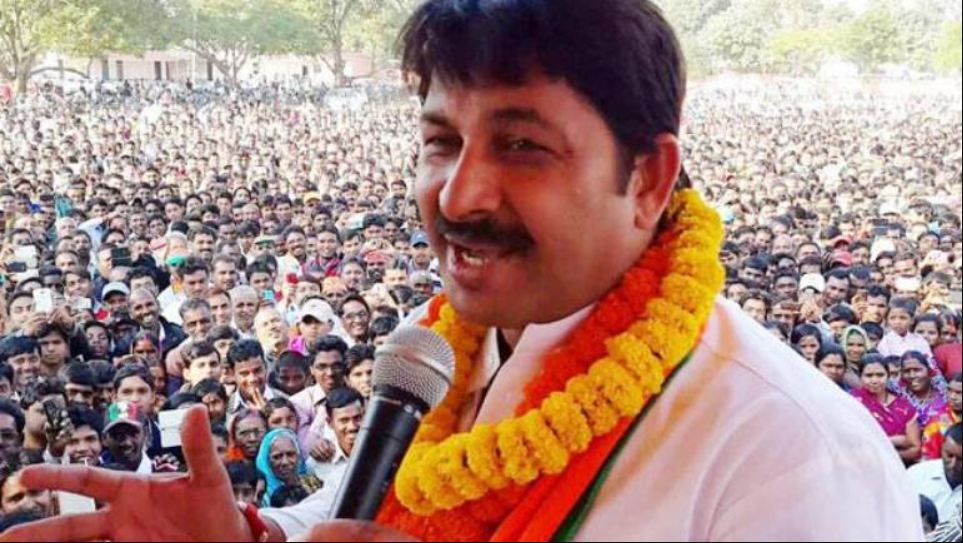Even as Delhi is bracing itself for the upcoming assembly polls, there is a lot of fuss about how the Purvanchali vote bank in Delhi could play a big role. Delhi constitutes a sizeable chunk of voters hailing from Eastern Uttar Pradesh and Bihar, that is, the Purvanchal region. They form an important section of the Delhi’s voters, constituting a quarter of Delhi’s 2 crore population. They are also a decisive factor in 30 of Delhi’s 70 assembly segments.
The spotlight on the Purvanchali vote bloc within Delhi therefore does not come as much of a surprise. However, what the analysts are missing is the fact that the Purvanchalis are not a unanimous vote bank, rather they are divided on caste lines. Politics in the state of Bihar and Uttar Pradesh is driven by religion and caste divide, the same phenomenon might manifest itself in Delhi also, though not on such a drastic scale but certainly on substantially similar lines.
There is a section which believes that the Purvanchalis are a composite vote bank in themselves commanded by Manoj Tiwari, a Purvanchali icon and a renowned Bhojpuri artist. He also happens to be the Delhi BJP chief, and the BJP must be pinning its hopes on the Purvanchali star to give it a decisive push in the Delhi Assembly polls. However, it is necessary to dissect the caste and religion lines on which the Purvanchalis are divided.
Since, the Purvanchalis in Delhi hail from the states of UP and Bihar, there is going to be an obvious division of votes on communal lines- Hindus and Muslims. Post the CAA, there was a politically motivated process of mongering rumours and instilling a sense of fear among the Muslims. Even Delhi did not remain untouched from this process, and the Muslim majority areas in Delhi such as Jamia Nagar and Seelampur too had witnessed violence. The AAP is also alleged to have been involved in such violent incidents. There is no reason why the AAP will not want to exploit the communal divide created by rumour mongering about the CAA.
AAP’s attempts to polarise the upcoming elections will also aggravate the religious divide within the Purvanchalis hailing from UP and Bihar. Apart from the religious divide, the caste factor will have a major influence upon the voting pattern of the Purvanchalis in Delhi.
To be specific, various caste groups among the Purvanchalis such as SCs, Baniyas, the OBCs, etc. are going to vote as specific blocs, and this will further polarise the Assembly elections. Purvanchali Yadavs are obviously going to search for a non-BJP face. On the other hand, the BJP can pin its hopes on the non-Yadav OBCs among whom the party enjoys immense popularity in the states of UP and Bihar. Even during the Lok Sabha polls last year, there was a consolidation of non-Yadav OBC votes in the favour of the BJP-led NDA in Bihar. Now, the BJP would be hopeful of retaining their vote share in the National Capital as well.
The political calculus among Purvanchalis in Delhi is not very difficult to crack. It is just a manifestation of the caste equations in UP and Bihar, albeit on a smaller scale. In line with this division of the Purvanchali vote, we can expect the SC vote among the Purvanchalis to get divided between the BJP and the Mayawati led BSP. In this context, it is revelant to mention that the BSP is going to contest all seats in Delhi.
Meanwhile, the BJP can bank upon the Sawarn voters among the Purvanchalis. But this is also where Kejriwal would be planning to eat into the BJP vote with his supposedly ‘clean’ image. Kejriwal has built a halo of clean image around himself, and the BJP will have to guard against this sentiment. Especially in the case of millennials and those who don’t understand the ins and outs of the political equations in the National Capital, Kejriwal might want to make good use of his carefully crafted clean image.
There is a tendency to look towards Manoj Tiwari as a vote catcher. He is a Purvanchali, but does not have the kind of connect with the masses that the BJP would have fancied. And given the stark social divisions within the Purvanchalis, one cannot be certain if Tiwari will be able to cut through the division on the lines of religion and caste. Moreover, Manoj Tiwari is a Brahmin and given the caste divide within the Purvanchalis, his Brahmin antecedents mean that the BJP loses out on a substantial share of Purvanchali vote if he is projected as the BJP face in Delhi.
What Delhi BJP presently lacks is a face that can pull crowds. There used to be Madan Lal Khurana and Jagdish Mukhi, but no such leader now. Hardeep Singh Puri, though an intellectual, does not have the capacity of pulling crowds. Though projecting him as the CM face could help in mobilising the Punjabi vote in Delhi, which is a solid vote bank and does not vote on caste lines.
Besides, Kejriwal seems to have understood the electoral arithmetic in Delhi and has played his card well. He has included many Purvanchalis in his party and cabinet such as Imran Hussain and Somnath Bharti, with the object of appeasing the Purvanchali vote share.
The Purvanchali vote bank is a myth. The Purvanchali vote share is nothing but a mix of several vote banks, each voting on a specific and separate pattern. Kejriwal knows this pretty well and is therefore trying to exploit the faultlines in the Purvanchali vote.
